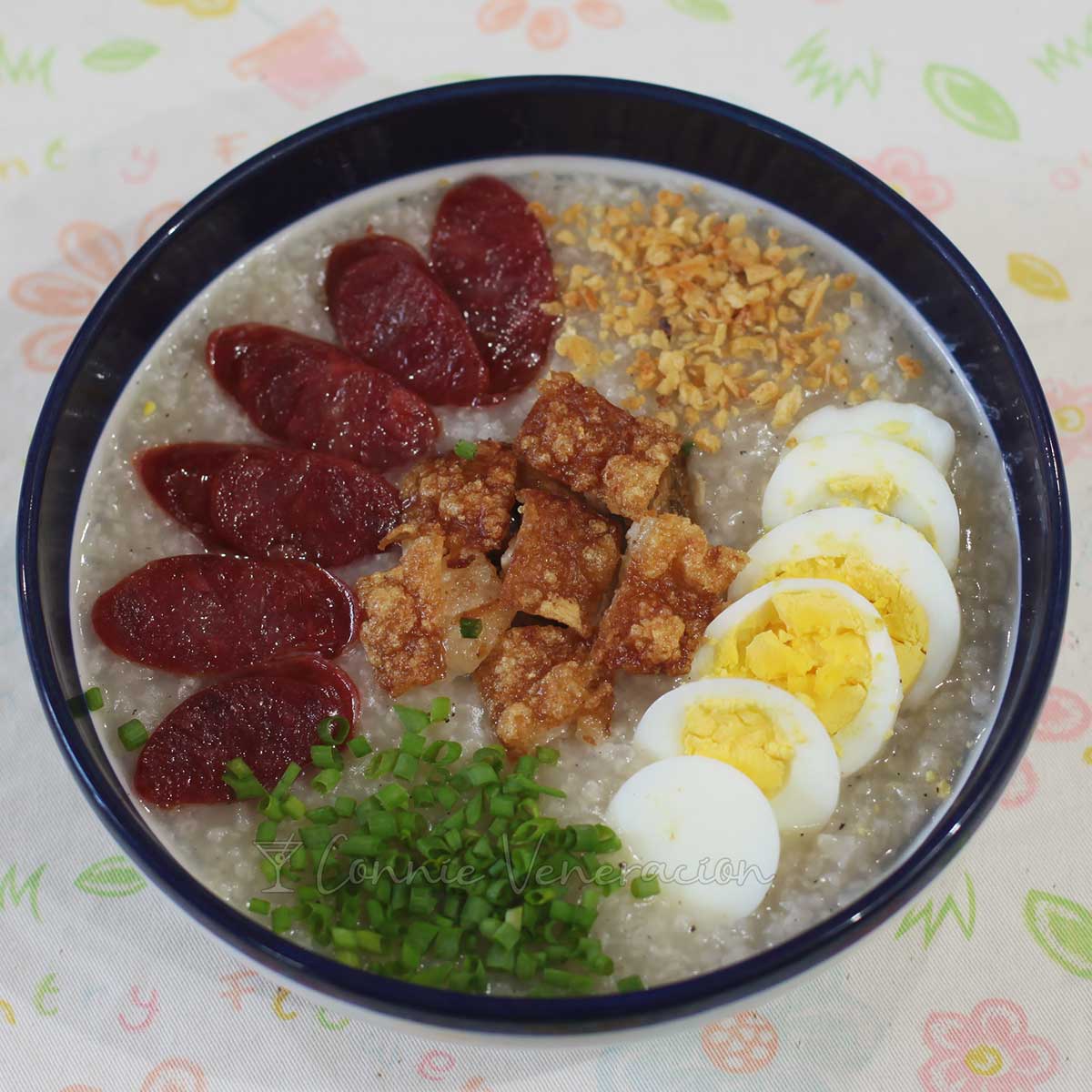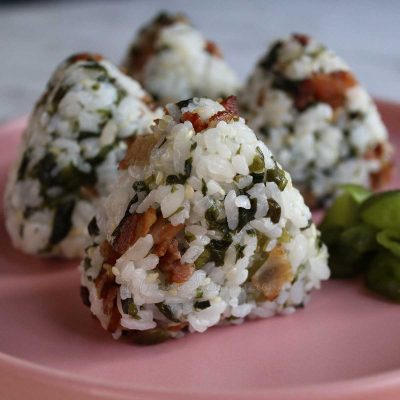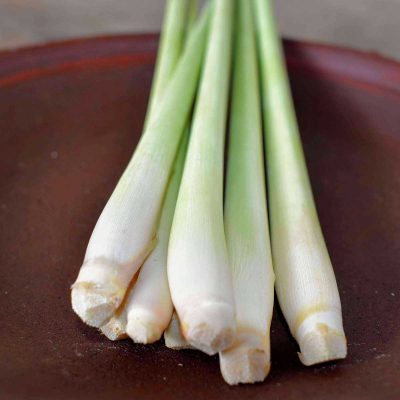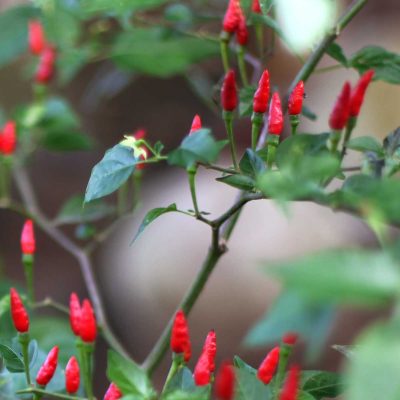Asian rice porridge, or congee, can be cooked with water or broth. It may be thick or thin. The rice grains may still be visible or not. Meat, seafood, seasonings and garnish may be placed on top or served on the side.
All that may sound strange to people who have only tried one kind of congee and who have right away decided that it is THE congee and no other variation is real congee. To those people, I say: go around Asia, eat congee in every country (make sure to pay attention to regional variations) and then reassess your position.
Congee has only two ingredients: rice and liquid
It’s true. And yet, it’s not as simple as it sounds. The variety of rice you use and the liquid in which it is cooked are crucial.
What rice variety is best for cooking congee?
In essence, congee is rice overcooked in liquid. The purpose of overcooking the rice is to allow it to release starch which gets mixed with the cooking liquid to create a porridge.
In other words, it is essential to use rice with high starch content. As a general guide, know that the shorter the rice grain, the starchier it is. Therefore, long grain rice like basmati is NOT ideal for cooking congee.
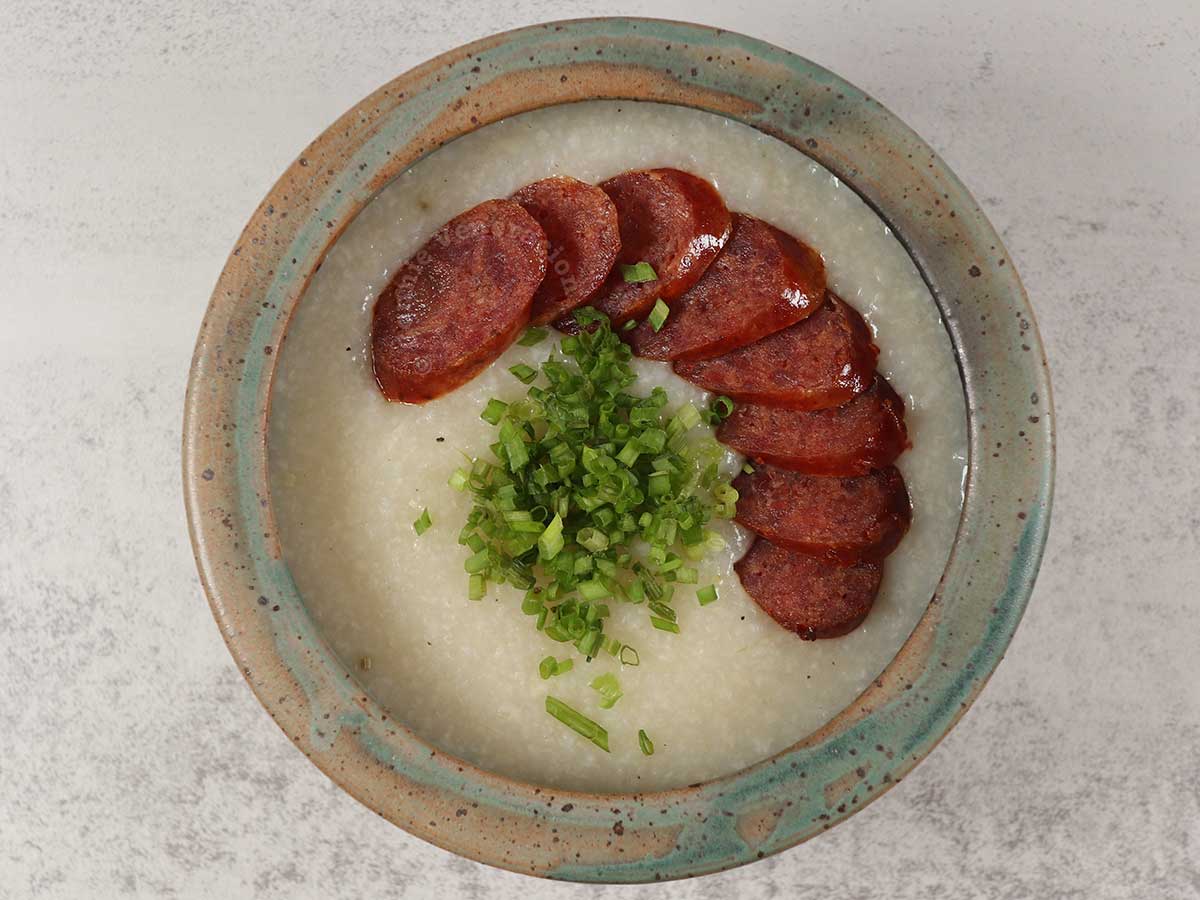
When cooking congee, use short or medium grain rice. Some cooks like to use rice combinations. Sticky rice with new rice. Jasmine rice with Japanese rice. Sticky rice with jasmine rice. The possible combinations are endless.
Can brown rice be used for congee?
In a nutshell, yes. Congee cooked with brown rice is just like congee cooked with white rice except for one thing — the mouth feel is different. There is still that distinct texture that comes from the bran and the germ both of which have been removed from white rice. Other than that, congee cooked with brown rice is delicious.
Is the cooking method different? No, but there is an added step in the preparation. Soak the brown rice prior to cooking. Place the (rinsed and drained) brown rice in a bowl, added enough water to cover then let the grains soak (in the fridge) for several hours. After that, cook it as though it were white rice.
Which is better for cooking congee: water or broth?
If congee is meant to be served like plain rice, it is best cooked with water and left unseasoned to keep its flavor neutral. That way, if you pair it with intensely flavored meat, seafood or sauces, the texture of the congee becomes pronounced and it becomes complimentary to everything else it is served with.
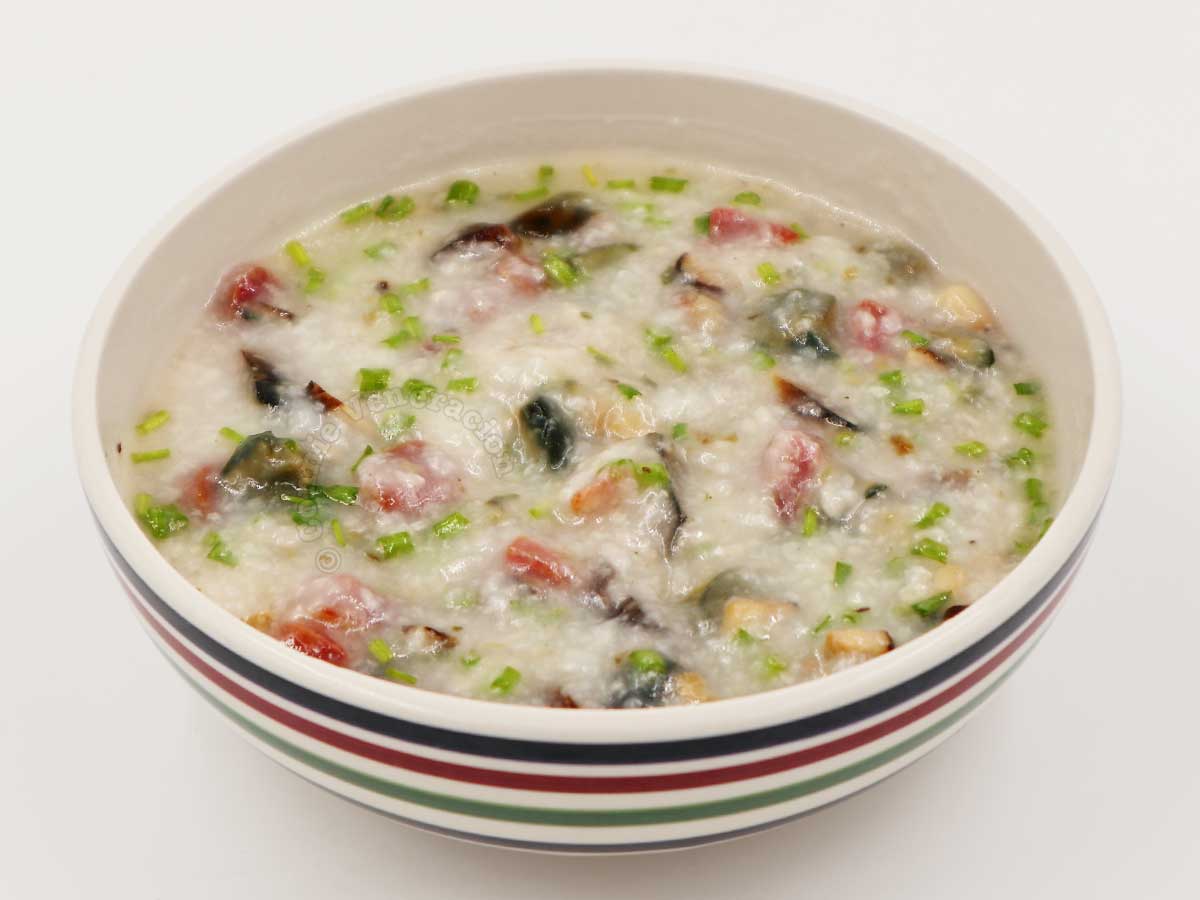
If congee is meant to be served like a soup, better make sure it is well seasoned. For richness, ditch the water and use broth — bone broth, fish broth or shrimp broth will all work.
What is the ideal proportion of rice to liquid?
A lot of websites state strict ratios. One cup rice to ten cups liquid… etcetera. DO NOT PAY ATTENTION. The correct ratio of rice to cooking liquid will always vary depending on the rice or rice combination you’re using.
Think of it this way: Newly harvested rice contains more moisture than rice that came out of the mill six months ago. Try cooking them in separate pots (use the same rice variety for an even more controlled experiment) using the same amount of liquid and subjecting them to equal length of cooking time. Just see what happens.
Should congee be cooked over low or high heat?
The truth? Both work. But there is a difference in the cooking method. If cooking congee over low heat, occasional stirring is required, the bottom of the pot scraped to loosen grains that may be stuck there.
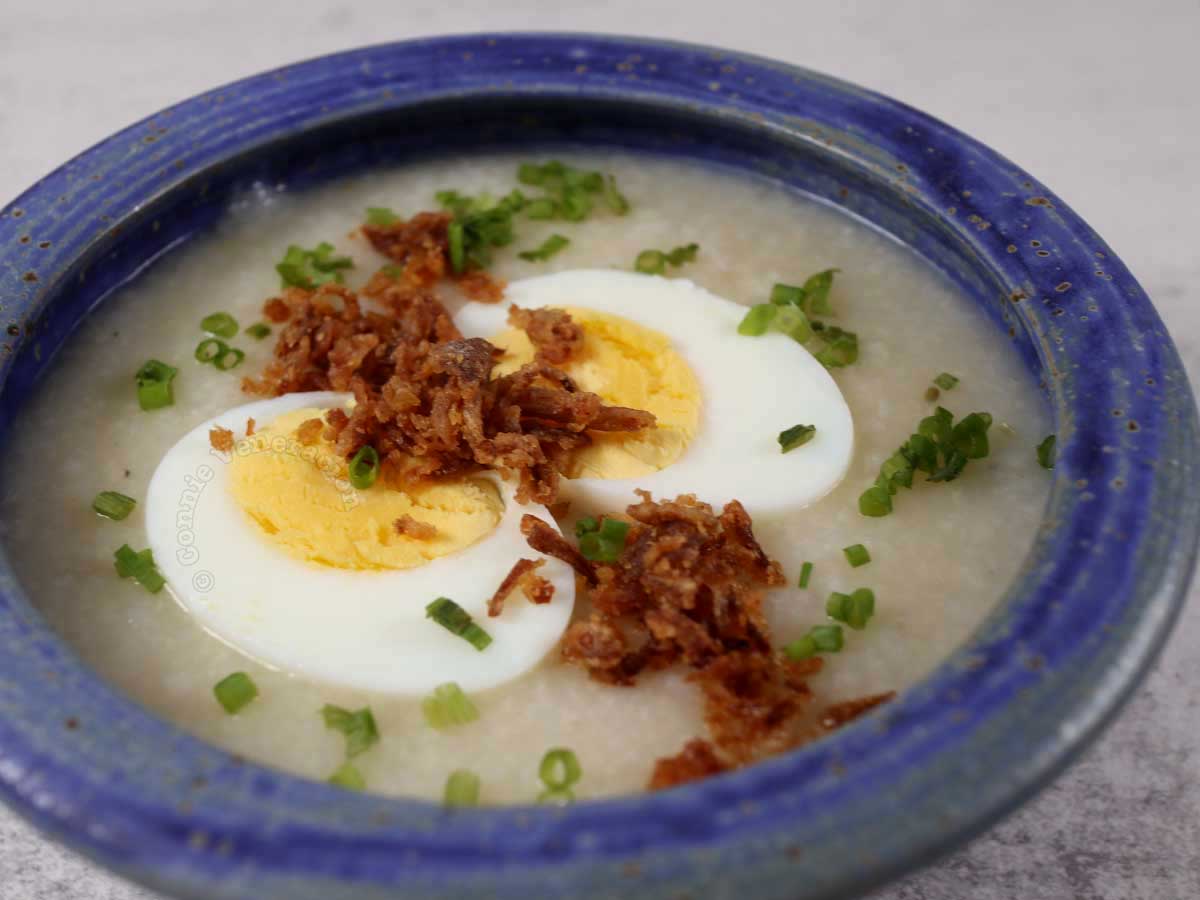
If cooking congee over high heat, it has to be stirred more often to loosen rice stuck on the bottom of the pot. Over high heat, stuck rice will scorch faster so you have to stir every few minutes. You will most likely need to add more liquid too during the cooking because there will be more evaporation.
How long is the cooking time?
Whether you cook your congee over low or high heat, the length of the cooking time depends on the texture you’re aiming for. The cooking time will be shorter if you want the rice grains to be visible. Cook longer if you want a silkier and smoother congee.
Cooking congee on the stovetop
First of all, I use a pot with a thick bottom. That’s to help prevent scorching which can easily occur especially after the mixture has begun to thicken.
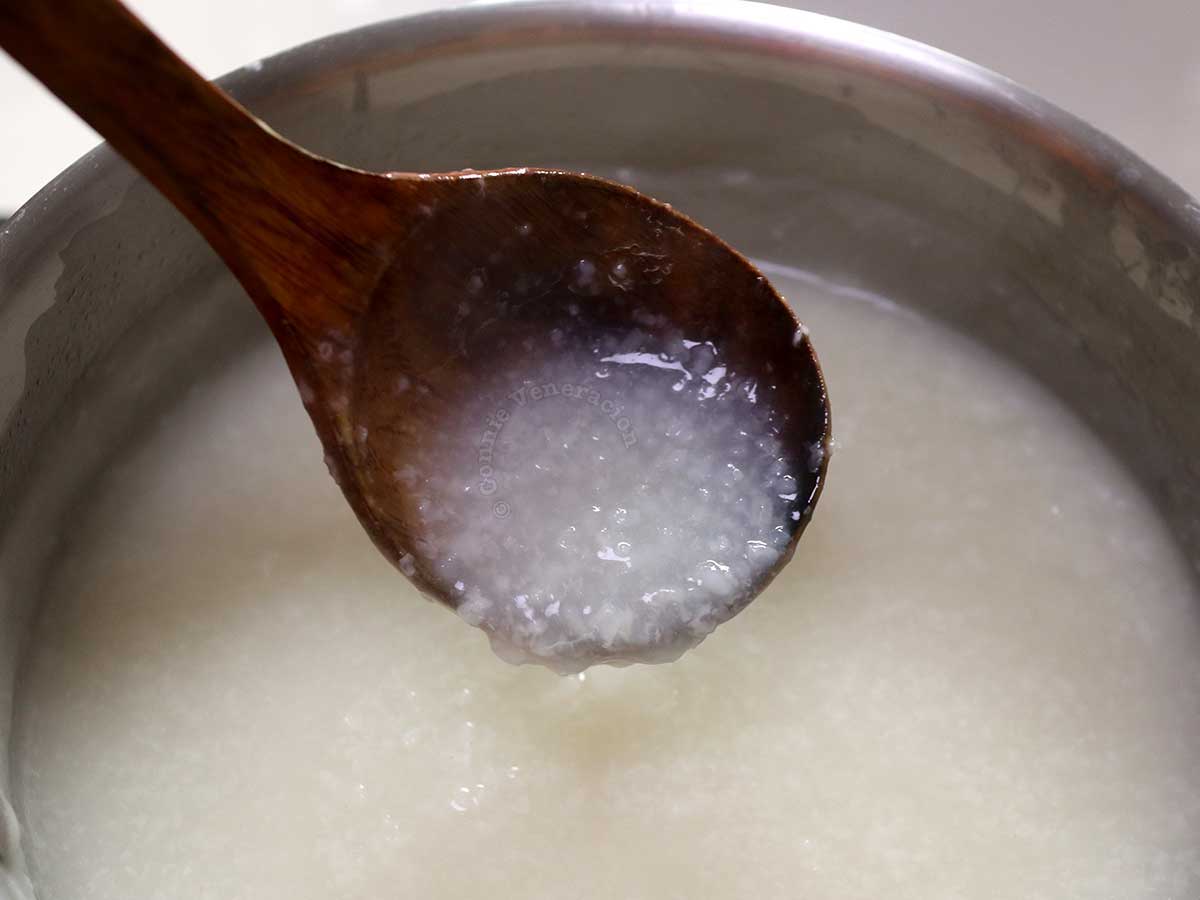
I prefer broth over water. Lightly seasoned broth. For one cup rice (jasmine or Japanese), I prepare six to eight cups of broth.
I pour five cups of broth into the pot, stir in the cup of rice and set the stove on high heat. When the mixture simmers, I set the heat to low, and start stirring with a wooden spoon to prevent the rice grains from clumping and to start the process of releasing starch into the liquid.
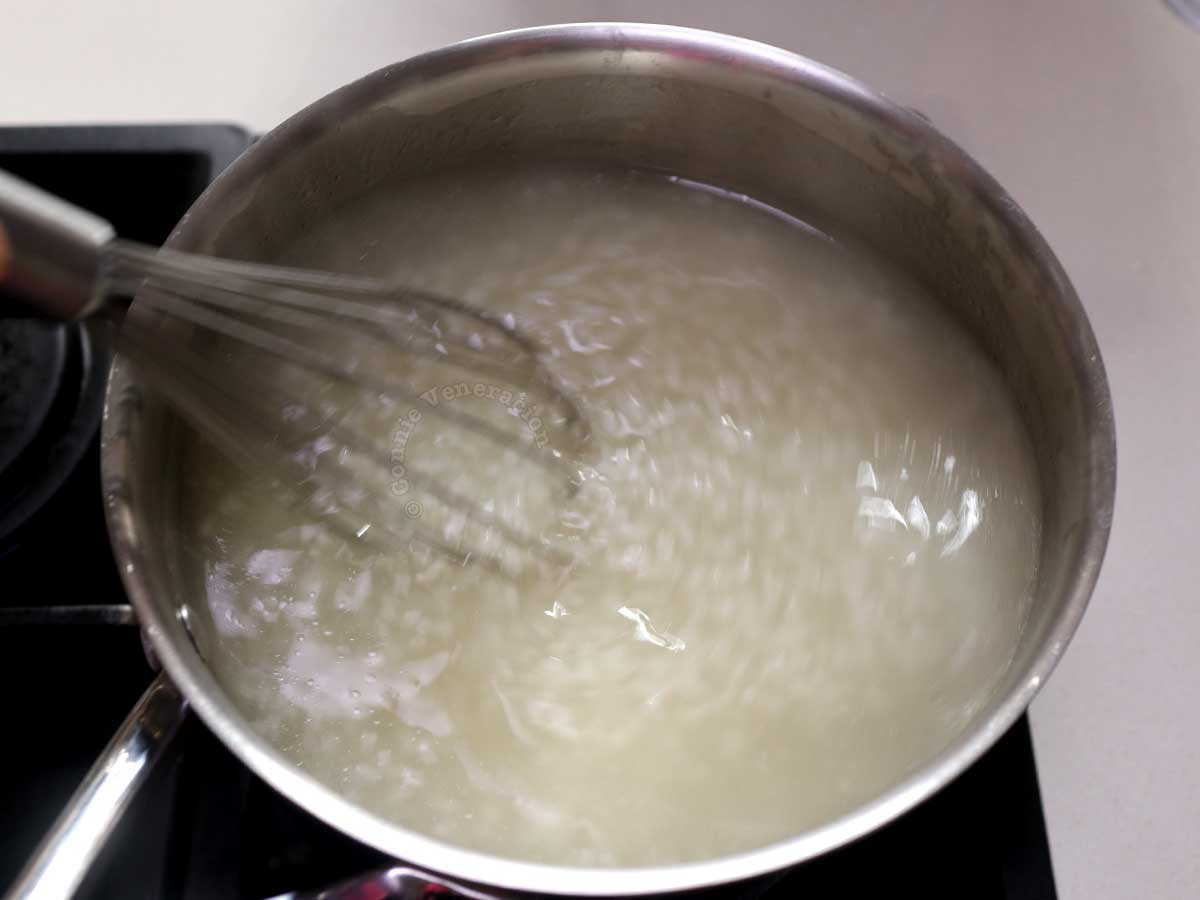
When the grains burst, I ditch the wooden spoon and start stirring with a wire wisk. It does a better job of agitating the rice and make them split into smaller pieces.
This is really where it gets exciting. If you love watching how rice and broth transform into congee, pay attention to how the liquid thickens and turns opaque, and how the rice grains become smaller and smaller pieces.
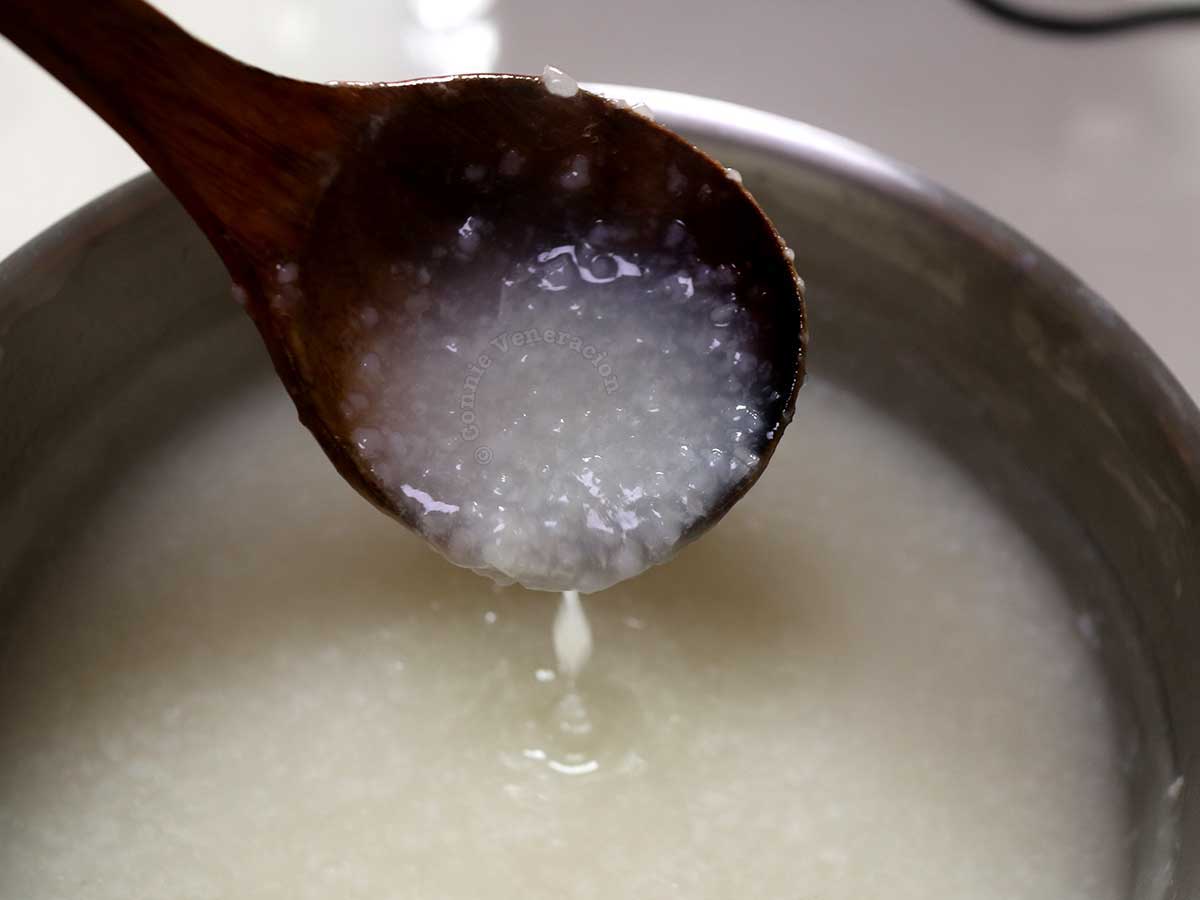
It takes a while for the transformation to happen and the visible changes will come slowly. I timed the process and it took twenty-two minutes from the time I started whisking to the time the congee reached the consistency that I wanted. And I added two more cups of broth in four increments.
Now, don’t think that you have to whisk non-stop. Whisk at intervals. One minute of whisking every five minutes or so should do the trick. And remember to scrape the bottom of the pot often.
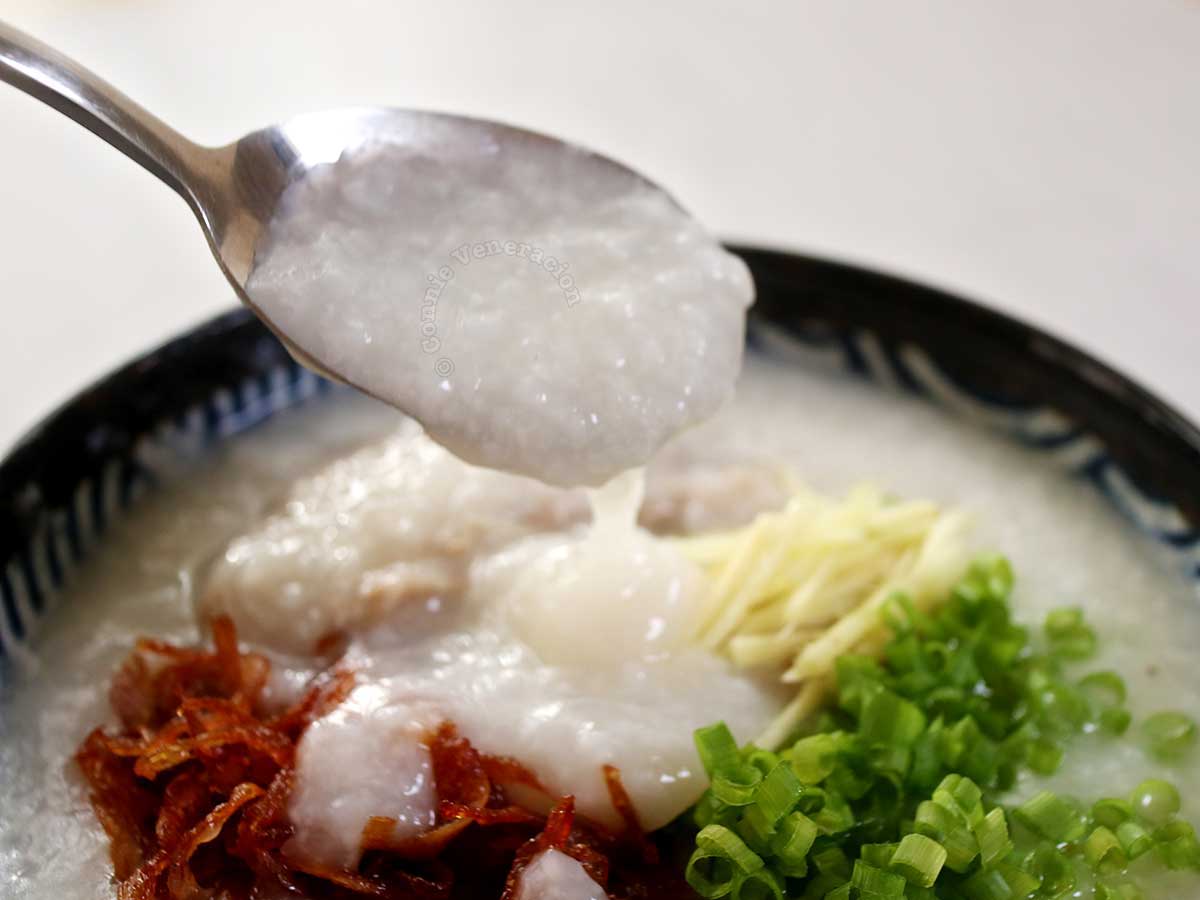
By the time I ladled the congee into bowls, that’s how thick it had become. Not a smooth paste as I prefer to still get a subtle feel of the rice on the tongue.
Slow cooker congee
Until we discovered the wonders of stirring congee with a wire whisk, the slow cooker was my default congee maker. Convenient, really, because there’s so little evaporation, there’s no need to add more liquid during cooking.
Parboil the rice
To make congee in the slow cooker, it is best to parboil the rice on the stovetop. Dump the rice in a pot, pour in water (I use a 1:1 ratio) and cook until the rice has absorbed all the liquid. The rice doesn’t need to get cooked through.
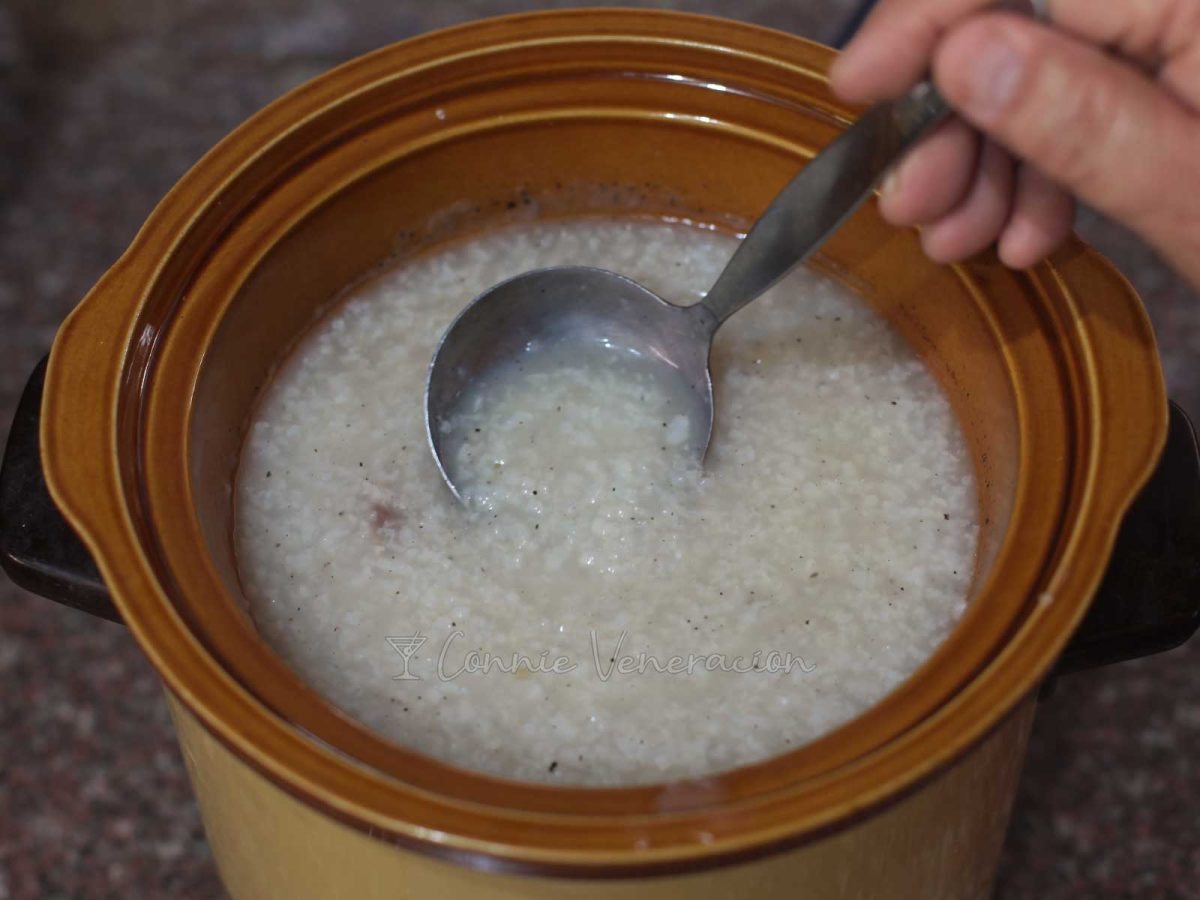
Why parboil? So that when you transfer it into the slow cooker and mix it with more liquid, the grains will easily separate and there will be no clumping.
Use hot liquid
Whether using broth or water, heat it first before pouring into the slow cooker with the parboiled rice. With the rice and liquid both hot, the cooking process begins immediately.
Stir once or twice during the first few hours of cooking to make sure that the rice does not settle to the bottom of the pot and stick there. Then, you can leave the slow cooker on LOW for ten to 12 hours, depending on how smooth you want your congee.

